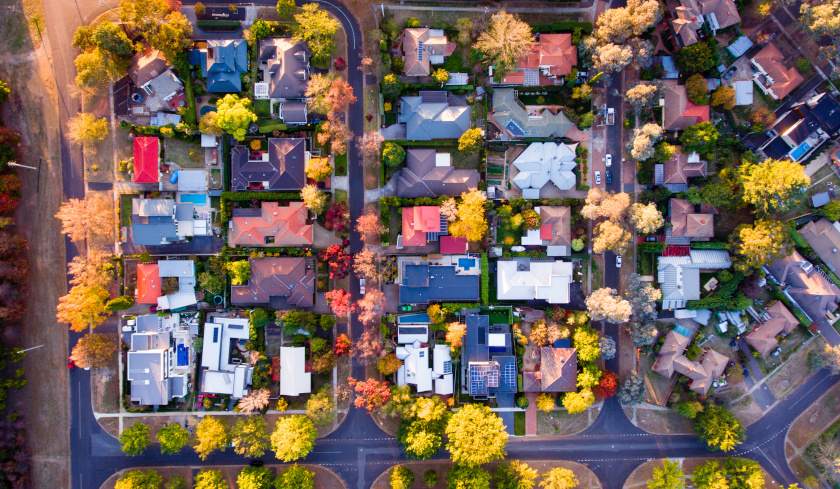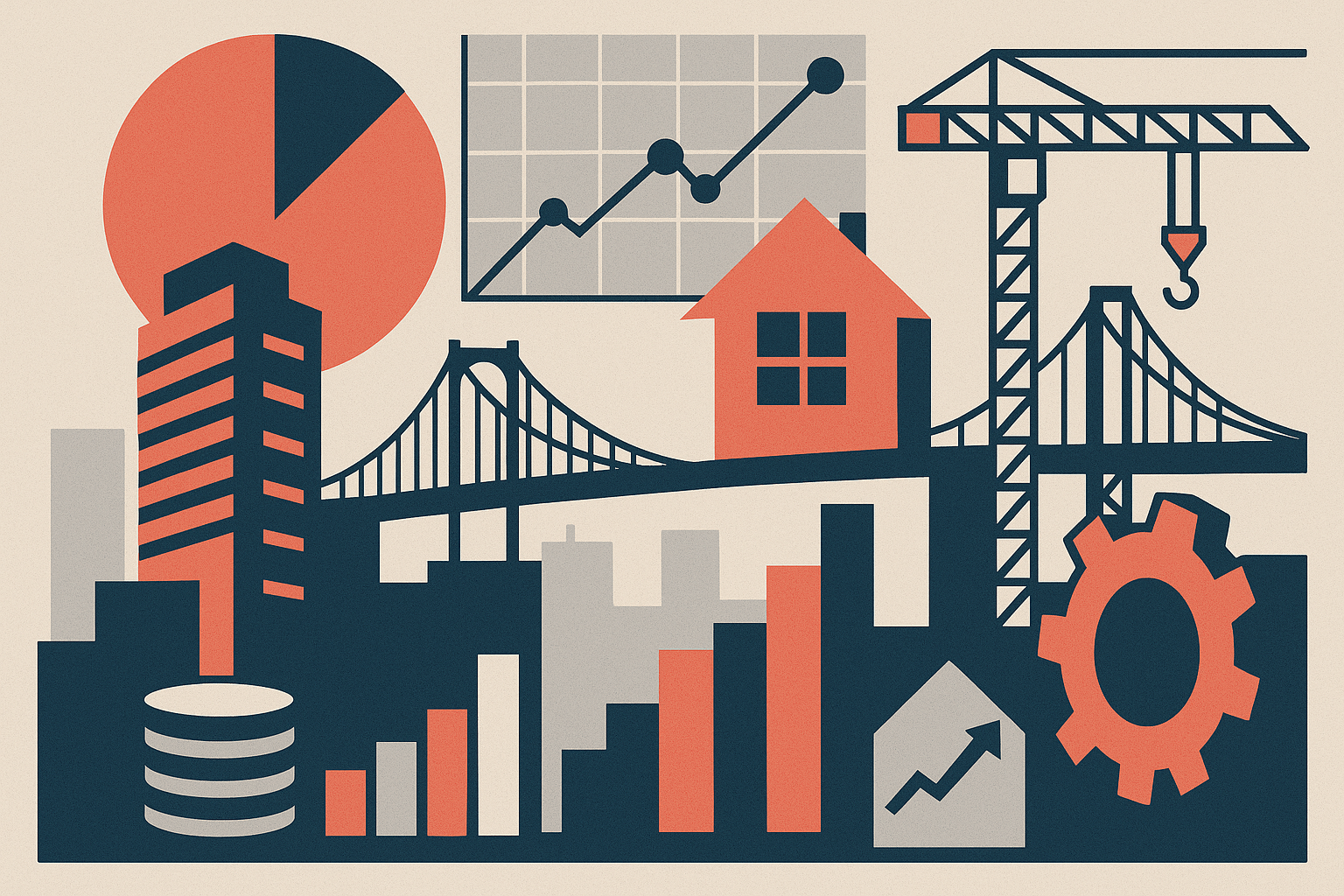Invest
Australians adjust financial strategies amid changing property market dynamics
Invest
Australians adjust financial strategies amid changing property market dynamics
The 2023 calendar year saw Australian borrowers acquiring a total of $300.9 billion in new loans for property purchases, marking a 12.7% decrease from the previous year.
Australians adjust financial strategies amid changing property market dynamics
The 2023 calendar year saw Australian borrowers acquiring a total of $300.9 billion in new loans for property purchases, marking a 12.7% decrease from the previous year.

This downturn reflects the broader impact of rising interest rates and the escalating cost of living on the property market, according to recent findings by PEXA. In contrast, refinancing activities surged by 11.4% as homeowners sought more favorable mortgage terms.
PEXA's comprehensive Mortgage Insights Report, focusing on loan activities within Australia's five mainland states for the year, reveals that a significant portion of property purchases was funded by new loans, with 461,979 instances recorded. Additionally, 452,025 existing loans underwent refinancing during the same period.
Rising interest rates were a pivotal factor driving a notable uptick in refinancing, with the aggregate value of refinanced loans climbing to $220.4 billion, an 11.4% increase from the previous year. The total value of property purchased across the nation in 2023 amounted to $613.0 billion. Of this, $300.9 billion was financed through new lending, with the rest accounted for by cash payments or alternative financing methods.
All mainland states experienced a reduction in new lending, with the largest drops seen in New South Wales (NSW) and Victoria (VIC), where the total new lending reached $109.5 billion and $84.1 billion, respectively. Despite this general downturn, Queensland (QLD) saw an increase in the median loan value to over $464,000, suggesting a persistent demand within the state, underscored by the year's highest volume of sale settlements.

Mike Gill, PEXA's Head of Research, indicated that while all mainland states saw increases in refinancing volumes, the last quarter of 2023 witnessed a decline. He suggested, "This late decline suggests that Australian refinancing activity may have peaked, in response to the strong upswing in the interest rate cycle in 2023 and in line with the surge in fixed-rate loans in the preceding two to three years."
Furthermore, the Reserve Bank's decision to raise the official interest rates by 0.25% to 4.35% in November 2023, following a three-month pause, typically triggers an increase in refinancing as homeowners look for more competitive rates. However, Gill posits that the timing of this rate hike possibly deterred many from refinancing before year's end.
The report also highlights that for the first time since the pandemic began, the median loan values in NSW and VIC have seen a reduction, signaling an improvement in affordability. NSW's median loan value decreased to $647,000, and VIC's to $497,000. This shift suggests buyers are leaning towards borrowing less.
In the commercial lending segment, the eastern states of Australia witnessed a 13.4% decline in new loan volumes in 2023, with NSW and VIC experiencing significant downturns of 20.7% and 16.3%, respectively. Queensland emerged as the leader in new commercial loans, surpassing the larger states for the first time.
The changing dynamics of Australia's property and lending landscapes in 2023 underscore the adaptability of homeowners and investors in response to economic pressures and market shifts, with an increasing preference for refinancing and more conservative borrowing practices.

Property
Hidden cost, higher prices: Why a council fee fight matters for Australia’s housing pipeline
A dispute between the Housing Industry Association and Goulburn Mulwaree Council over development cost estimates is more than a local skirmish—it spotlights a systemic pricing lever that can compound ...Read more

Property
Why Aussie homes are turning into stepping stones for the new generation
A new cohort of buyers is treating their first property as a launchpad, not a destination—and the mortgage industry is pivoting in lockstep. Read more

Property
Rate cuts ignite an upsizing wave: how to win the next phase of Australia’s housing cycle
Cheaper money is reviving borrowing capacity and confidence, and upsizers are back in force — most visibly at auctions where clearance rates have lifted to yearly highs. The ripple effects extend ...Read more

Property
Rate anxiety fades, affordability bites: What Australia’s property market shift means for business
Australian buyers are no longer driven primarily by interest rate fears; the binding constraint is affordability. New research shows price pressure, not policy moves, is shaping behaviour—forcing ...Read more

Property
South Australia's first-home buyer boom fuels a frenzy for lenders, builders and retailers
South Australia has quietly become the nation’s most active first‑home buyer market, fuelled by falling rates, generous state incentives and a responsive broker ecosystem. Read more

Property
Melbourne’s turning point: the 2025 playbook for investors—and the 2026 upside
After lagging other capitals, Melbourne is quietly moving off the floor. Prices have logged several consecutive months of growth, rental markets remain tight, and forecasts point to a sharper upswing ...Read more

Property
Brisbane hits the million-dollar mark as growth takes a detour and investors eye new opportunities
Brisbane has crossed the symbolic $1 million median for houses, but the more investable momentum is in units—and the growth curve is flattening. Read more

Property
North platform adds household reporting feature to boost adviser efficiency
AMP's North platform has launched consolidated household reporting across multiple client accounts, helping financial advisers streamline their client review processes. Read more

Property
Hidden cost, higher prices: Why a council fee fight matters for Australia’s housing pipeline
A dispute between the Housing Industry Association and Goulburn Mulwaree Council over development cost estimates is more than a local skirmish—it spotlights a systemic pricing lever that can compound ...Read more

Property
Why Aussie homes are turning into stepping stones for the new generation
A new cohort of buyers is treating their first property as a launchpad, not a destination—and the mortgage industry is pivoting in lockstep. Read more

Property
Rate cuts ignite an upsizing wave: how to win the next phase of Australia’s housing cycle
Cheaper money is reviving borrowing capacity and confidence, and upsizers are back in force — most visibly at auctions where clearance rates have lifted to yearly highs. The ripple effects extend ...Read more

Property
Rate anxiety fades, affordability bites: What Australia’s property market shift means for business
Australian buyers are no longer driven primarily by interest rate fears; the binding constraint is affordability. New research shows price pressure, not policy moves, is shaping behaviour—forcing ...Read more

Property
South Australia's first-home buyer boom fuels a frenzy for lenders, builders and retailers
South Australia has quietly become the nation’s most active first‑home buyer market, fuelled by falling rates, generous state incentives and a responsive broker ecosystem. Read more

Property
Melbourne’s turning point: the 2025 playbook for investors—and the 2026 upside
After lagging other capitals, Melbourne is quietly moving off the floor. Prices have logged several consecutive months of growth, rental markets remain tight, and forecasts point to a sharper upswing ...Read more

Property
Brisbane hits the million-dollar mark as growth takes a detour and investors eye new opportunities
Brisbane has crossed the symbolic $1 million median for houses, but the more investable momentum is in units—and the growth curve is flattening. Read more

Property
North platform adds household reporting feature to boost adviser efficiency
AMP's North platform has launched consolidated household reporting across multiple client accounts, helping financial advisers streamline their client review processes. Read more








